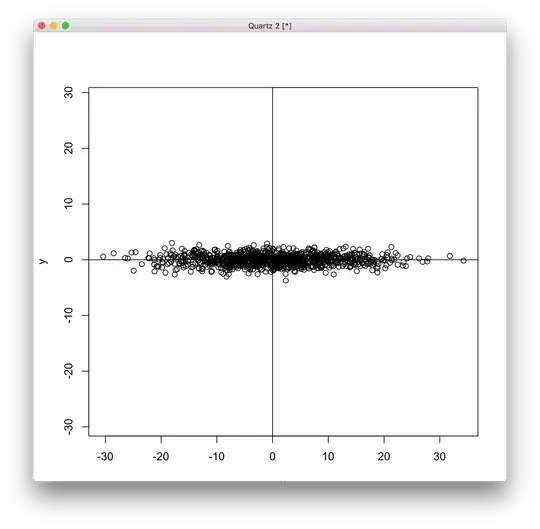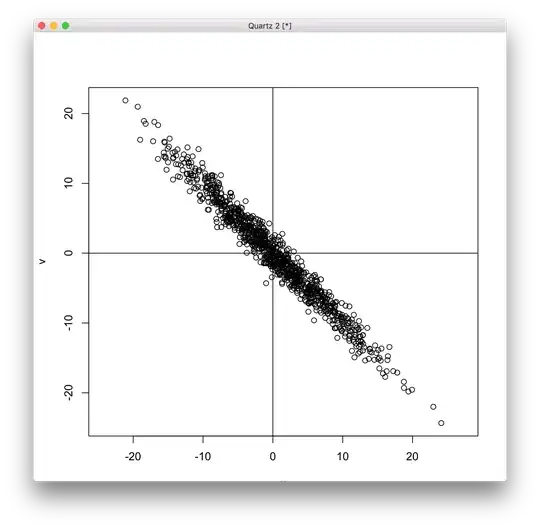If $\mathbf{Cov}=0$ let $u=x \cdot cos(\theta)+y \cdot sin(\theta)$
and $v =y \cdot cos(\theta)-x \cdot sin(\theta)$.
What will be $\mathbf{Cov}(u,v)$? Will it be $0$?
If $\mathbf{Cov}=0$ let $u=x \cdot cos(\theta)+y \cdot sin(\theta)$
and $v =y \cdot cos(\theta)-x \cdot sin(\theta)$.
What will be $\mathbf{Cov}(u,v)$? Will it be $0$?
Firstly a quick empirical example to get an intuition. Take the x,y as in the following figure, which have a sample covariance very close to 0 (actual value -0.038):

Rotate these values by 45 degrees, giving u,v in the following figure:

Do you think the correlation is still 0?
Now to the theoretical bit. Remember that the covariance is bilinear, that is $$\operatorname{cov}(x,ay + w) = a\operatorname{cov}(x,y) + \operatorname{cov}(x,w),$$
and same for the first variable.
Using this for $\operatorname{cov}(u,v)$, and using the fact that $\operatorname{cov}(x,y) = 0$, we get $$\operatorname{cov}(u,v) = \operatorname{cov}(x,x)\sin(\theta)\cos(\theta) + \operatorname{cov}(y,y)\sin(\theta)\cos(\theta)$$ $$ = [\operatorname{var}(x) + \operatorname{var}(y)]\sin(\theta)\cos(\theta)$$
which is not necessarily 0.